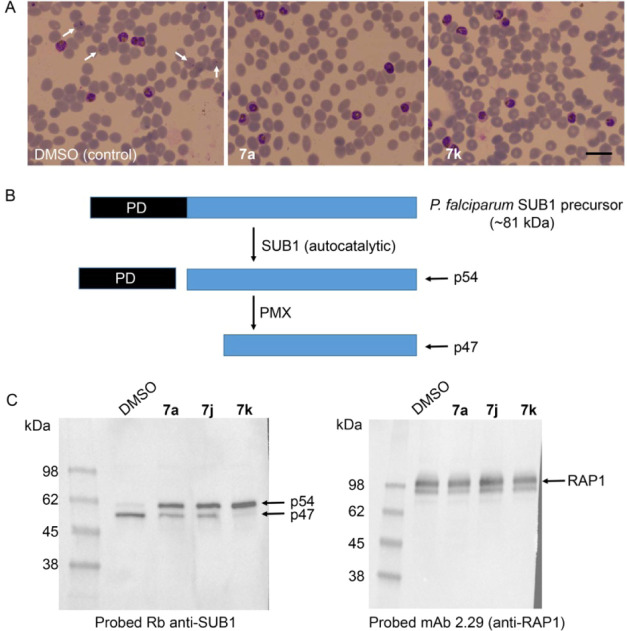Figure 4.
Macrocycle PMX inhibitors have no effect on intraerythrocytic parasite maturation but prevent egress and maturation of SUB1. (A) Light microscopic images of Giemsa-stained P. falciparum 3D7 parasites allowed to mature for 44 h in the presence of vehicle only (dimethyl sulfoxide (DMSO), control) or macrocycle compounds 7a and 7k (20 nM). Development of ring-stage parasites to the multinucleated schizont stage occurred similarly in all cultures. However, while new ring-stage parasites arising from successful egress and invasion were beginning to become evident by this time point in control cultures (DMSO panel, white arrows), schizont rupture and appearance of new rings did not occur in the cultures containing the PMX inhibitors, even following extended further incubation. Scale bar, 20 μm. (B) Simplified schematic of proteolytic maturation of the egress effector SUB1. Conversion of the precursor form to p54 is through autocatalytic removal32 of the prodomain region (PD), whereas conversion of p54 to p47 is mediated by PMX.15,16,33 (C) Left, Western blot analysis of P. falciparum 3D7 schizonts allowed to mature in the presence of the indicated macrocycle compounds (20 nM), showing defective SUB1 maturation in parasites treated with the indicated macrocycle compounds. Right, Western blot of the same extracts probed with a monoclonal antibody (mAb) specific to the rhoptry protein RAP1, which is a substrate for cleavage by the related P. falciparum protease PMIX. The compounds had no discernible effect on the maturation of RAP1. The results shown are typical of 3 independent experiments.

